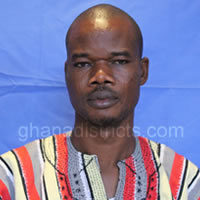Vulnerability
Disability
Persons with disabilities (PWD) have been defined as those who are unable to or are restricted in the performance of specific tasks / activities due to loss of function of some part of the body as a result of impairment or malformation (Ghana Statistical Service, 2012). As a result, PWDs face a wide range of life challenges because disability, in whatever form or type, can reduce an individual’s ability to function to his / her full potential. Disability can limit an individual’s full participation in a number of activities in life. Estimates from the World Health Organisation (WHO) show that there are more than 600 million PWDs in the world, of which approximately 80 percent live in low-income countries (Ayiku, 2012).
In Ghana, PWDs in general are marginalized and suffer from discrimination on account of their disability status. They are mostly regarded as less productive and not capable of contributing to development compared to their non-disabled counterparts.Accordingly, they are often seen as a burden on society and their unfortunate circumstances are viewed sometimes as a curse or punishment.
Furthermore, they have poorer health status, lower educational achievements, less economic participation and higher levels of poverty than people without disabilities.
This chapter presents details on the population by types of disability, disability by locality, disability and activity status, education and literacy.
Population with Disability
The 2010 PHC shows that two percent (2.0%) of the population reported various forms of disability across gender and locality as shown by Table 6.1.
Type of Disability
Table 6.1 shows that the commonest form of disability in the District is sight impairment accounting for one-third (36.1%) of all PWDs. Hearing (28.6%), physical (27.8%) and speech (20.3%) disabilities are also common among the people. There are fewer people with intellectual (13.6) and emotional (13.8%) disabilities in the District. Expect for sight and hearing disability, almost equal proportion of males and females suffer from one form of disability or the other.
Distribution by Type of Locality
Figure 6.2 shows that sight impairment (38.8%) is the commonest form of disability among the population living in the rural locality. Hearing (32%), physical (28.8) and speech (20.6%) disabilities are also high in the District as compared to emotional (14.3%), intellectual (13.7%) and other (7.7%) forms of disabilities in rural localities.
However, the situation seems to be different in the urban areas as shown in figure 6.2. Although sight (24.7%) impairment is still the commonest form of disability in the urban locality, physical disability is also high constituting 23.7 percent of the urban population. Speech and other forms of disabilities also record 18.7 and 19.6 percent respectively. The least common form of disability found in the urban locality is emotional (11.9%).
Disability and Activity
Table 6.2 shows disability and economic activity status in the District. Of the population with disability in the District, over half (54.5%) is employed with slightly more male disability (59.4%) employed than female (49.4%). Looking at employment status of people with disability by type of disability, it appears with the exception of the physically impaired (41.5%) all other types of disabilities have close to half or slightly more of them being employed: sight 49.8 percent, hearing 59.3 percent, speech 56.6 percent and so on.
The employment status of male people with disabilities appears far better than their female counterparts. For instance, 70.8 percent of males with hearing impairment are employed compared to 48.5 percent of their female counterparts. Similarly, 63.4 percent of males with speech disabilities are employed as against 47.5 percent of females in the same category,
A good percentage of disabled (44.0%) people are economically not active, with many more females being economically not active than males (39.9%) with disability. As expected about half (49.6%) of people with intellectual disability (49.6%) and physical disability (58.1%) are economically not active.
Disability, Education and Literacy
Table 6.3 shows that there are a total of 1,114 persons with disability aged 3 years and older. Among these, 817 persons representing almost a third (73.3%) have never attended school, only 220 persons (19.7%) have been educated to the basic school level (Kindergarten, Primary and JSS/JHS).
However, there are only two disabled persons (0.2%) who have a bachelor’s degree and one person with other forms of disability who also attained a bachelor’s degree.
Considering school attendance by people with disability by gender, 77.2 percent males have never attended school as against 79.9 percent of females. Of those who have been to school, the majority only manage to end up at the elementary level.
Date Created : 11/23/2017 3:29:55 AM



